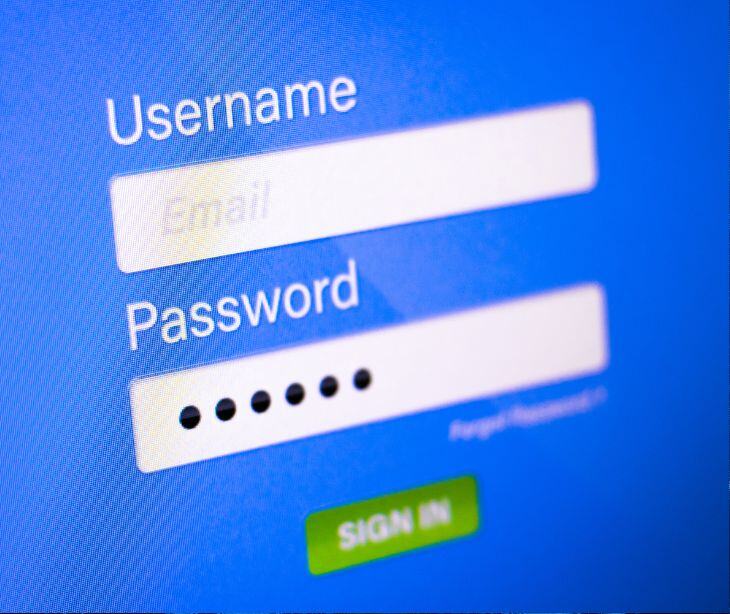3 min read
1.7 billion individuals' data exposed: Insights from the latest ITRC report
Farah Amod
February 08, 2025

Over 1.7 billion individuals fell victim to data breaches in 2024, with weak security measures and a lack of multifactor authentication driving record-breaking exposures.
What happened
In 2024, data breaches reached alarming levels, impacting more than 1.7 billion individuals, a 312% increase in breach victim notices compared to the previous year. The Identity Theft Resource Center (ITRC) Annual Data Breach Report revealed that cyberattacks accounted for 80% of breaches, with six major incidents exposing over 100 million records each.
The most severe breaches included:
- Ticketmaster: 560 million records exposed
- Advance Auto Parts: 380 million records
- Change Healthcare: 190 million healthcare records compromised
While the total number of reported breaches slightly declined, the number of records compromised soared due to a few high-impact attacks.
A closer look at the numbers
Six large-scale breaches were responsible for 85% of all data breach victim notifications in 2024.
- Healthcare remained a major target, with over 247 million patient records exposed, primarily due to the Change Healthcare breach.
- Financial services surpassed healthcare as the most-breached industry for the first time since 2018.
- Credential-based attacks were a major contributor to breaches at Ticketmaster, Advance Auto Parts, Change Healthcare, and AT&T. In each case, compromised login credentials were exploited due to the lack of multifactor authentication (MFA), leading to the unnecessary exposure of 1.24 billion records.
The profound risks of this data exposure
Massive breaches like these reveal more than just poor security practices, they expose weaknesses in how organizations approach data protection.
Data breaches fuel a long-term cycle of fraud
Once breached, personal data doesn’t simply disappear, it circulates among cybercriminals for years. Leaked credentials lead to account takeovers, identity fraud, and financial scams. Even individuals who don’t see immediate harm may become victims long after an initial breach.
Regulations lag behind, leaving consumers unprotected
While some states enforce strong breach notification laws, the U.S. still lacks a federal data privacy law comparable to Europe’s GDPR. The lack of uniform regulations means organizations operate under inconsistent security expectations, leaving personal data at risk.
Negligence, not sophistication, causes most breaches
Many of the largest breaches in 2024 stemmed from avoidable security failures. Weak passwords, lack of MFA, and poor access controls were primary causes, not advanced cyber tactics. Preventing these breaches required basic security hygiene, not cutting-edge technology.
Lessons from the 2024 data breaches
MFA is no longer optional—it’s the bare minimum
Despite overwhelming evidence that multifactor authentication (MFA) prevents account takeovers, many organizations still fail to implement it. The fact that four of the year’s largest breaches could have been prevented by simply enabling MFA proves a continued failure in security leadership.
Healthcare must rethink its security priorities
For years, the healthcare industry has been the top target for data breaches. While 2024 saw financial services take the lead, healthcare breaches are still increasing in severity. The exposure of 190 million patient records at Change Healthcare only, indicates the necessity of stricter cybersecurity standards and mandatory implementation of MFA under HIPAA regulations.
Businesses still prioritize convenience over security
Organizations continue to resist security measures that introduce friction, even if those measures would prevent catastrophic breaches. This failure to balance security and usability keeps exposing billions of records, reinforcing the need for stronger regulatory enforcement.
Data breaches are cumulative, not isolated events
Each breach contributes to an expanding pool of compromised credentials, fueling future cyberattacks. Organizations must recognize that every breach has ripple effects, enabling further exploits like credential stuffing and identity theft. Treating each breach as a one-off event underestimates its long-term impact.
Public awareness and consumer protections remain inadequate
Most individuals affected by breaches receive little to no real recourse. Credit monitoring and fraud alerts are reactive measures, not solutions. Until meaningful protections, such as legal consequences for negligent security practices and stronger consumer rights are enacted, breaches will continue to rise.
FAQs
How do data breaches typically occur?
Data breaches often result from cyberattacks, such as phishing, malware, and credential theft. Weak security practices, like reusing passwords and lacking multifactor authentication (MFA), also make breaches more likely.
What personal information is usually exposed in a breach?
Depending on the breach, exposed data can include names, addresses, Social Security numbers, financial details, medical records, and login credentials. In some cases, even biometric data is compromised.
How can individuals protect themselves after a breach?
If your data is exposed, immediately update passwords, enable MFA on accounts, monitor financial statements, freeze credit if necessary, and stay alert for phishing attempts using your stolen information.
Are companies legally required to notify individuals of a data breach?
In the U.S., data breach notification laws vary by state. Some states mandate swift disclosure, while others have looser requirements. There is no single federal law enforcing uniform breach notification.
What steps can businesses take to reduce the risk of a breach?
Companies should enforce strong security measures, including MFA, regular security audits, employee cybersecurity training, encrypted data storage, and rapid response plans for potential breaches.
Subscribe to Paubox Weekly
Every Friday we'll bring you the most important news from Paubox. Our aim is to make you smarter, faster.



